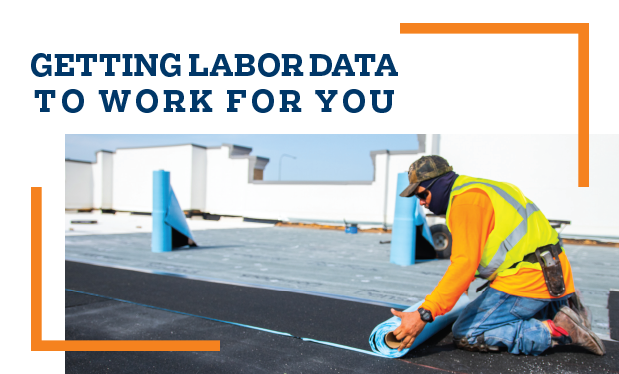Metal drip edges are used at rakes and eave edges of steep-slope roof assemblies as a means of properly terminating roof systems' edges. Requirements and guidelines for metal drip edge usage vary, and you should be aware of the differing information. Following is a brief review of metal drip edge requirements in the International Building Code,® 2018 Edition and International Residential Code,® 2018 Edition, as well as NRCA's recommendations.
IBC requirement
In IBC 2018's Section 1507.2-Asphalt Shingles, specific requirements for metal drip edges are provided in Section 1507.2.8.3.
A drip edge is required to be provided at the eaves and rakes of asphalt shingle roof systems. A drip edge's flange should extend back onto the roof surface a minimum of 2 inches. Underlayment should be installed over a drip edge flange at eaves and under drip edge flanges at rakes. The vertical face of a drip edge should be a minimum of 1 1/2 inches and extend at least 1/4 of an inch below a roof deck's bottomside surface. Adjacent segments of drip edge shall be lapped a minimum of 2 inches. Drip edges shall be attached at a maximum 12 inches on-center fastening pattern.
IBC does not provide specific requirements for drip edge usage on clay and concrete tile, metal panel and shingle, roll roofing, slate, or wood shake and shingle roof systems.
IRC requirement
In IRC 2018's Section R905.2-Asphalt Shingles, specific requirements for metal drip edges are provided in Section R905.2.8.5.
A drip edge is required to be provided at the eaves and rakes of asphalt shingle roof systems. The specific requirements for drip edges are similar to those contained in IBC 2018 except the residential code also requires a drip edge to be fastened with the same fasteners required for asphalt shingle installation.
The residential code does not provide specific requirements for drip edge usage on clay and concrete tile, metal shingle, roll roofing, slate, or wood shake and shingle roof systems.
NRCA guidelines
The use of a drip edge at eaves and rakes provides a means of terminating steep-slope roof systems' underlayment and provides for efficient watershedding.
NRCA recommends the use of drip edges at all eaves and rakes for asphalt shingle roof systems. A metal drip edge is most common for asphalt shingle roof systems; however, other drip edge materials, such as redwood or cedar, sometimes are used in decorative fascia applications.
A metal drip edge typically is fabricated in two configurations, L-type or T-type. The specific configuration and metal material used for a metal drip edge usually varies with local practices. If a specific metal drip edge configuration or material is desired, it should be clearly specified.
A metal drip edge at eaves should be applied directly to a roof deck, and the drip edge's flange should be covered by the underlayment. Alternatively, if a self-adhering polymer-modified bitumen sheet is applied directly to a deck at eaves, a metal drip edge can be applied over it. The metal drip edge's flange can then be stripped in with a 6- to 10-inch strip of self-adhering polymer-modified bitumen sheet.
At rakes, a metal drip edge should be applied over underlayment beginning at the eaves and continuing up the roof slope. This arrangement provides for metal drip edge laps to be installed shingle fashion to shed water. Adjacent segments of metal drip edge should be lapped a minimum of 2 inches. NRCA suggests fastening metal drip edge at about 12 inches on center, slightly staggered. Spacing may need to be closer in high-wind regions.
At eaves and rakes with L-type metal drip edge, asphalt shingles should extend about 1/4 to 3/4 of an inch beyond the drip edge's vertical face. For a T-type drip edge, asphalt shingles should be at least flush with or extend up to about 3/4 of an inch beyond the drip edge metal.
Asphalt shingle manufacturers' installation instructions also should be consulted for requirements specific to their products.
For clay and concrete tile, metal shingle, slate, and wood shake and shingle roof systems, the use of a metal drip edge should be considered depending on the climate's severity, anticipated rainfall, freeze-thaw cycling and edge framing construction.
When climate or roof edge construction dictates the need for a metal drip edge, the type and minimum thickness of the material should be commensurate with a slate roof system's expected service life.
Additional information about steep-slope roof systems is provided in The NRCA Roofing Manual: Steep-slope Roof Systems—2017.
Mark S. Graham is NRCA's vice
president of technical services.
@MarkGrahamNRCA
This column is part of Research + Tech. Click here to read additional stories from this section.



